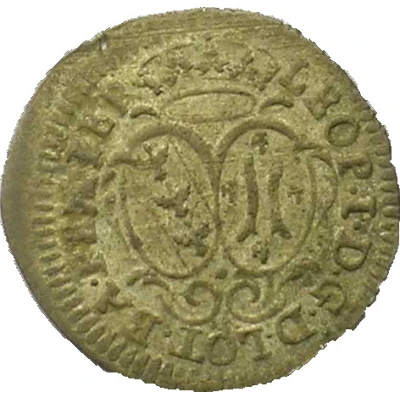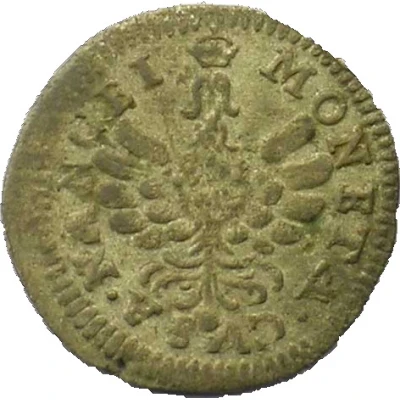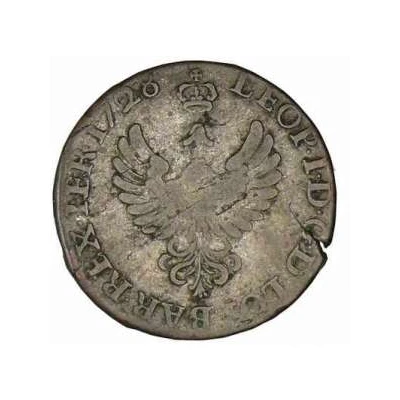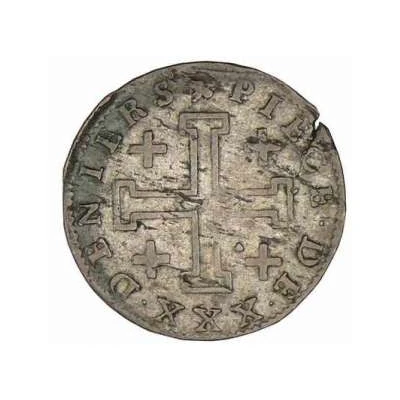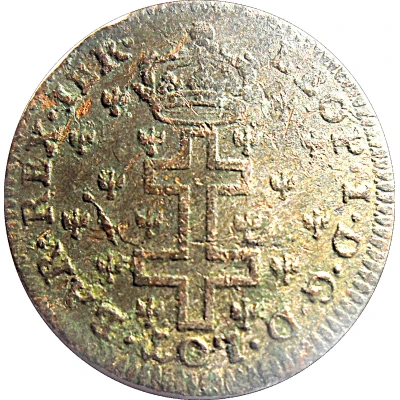
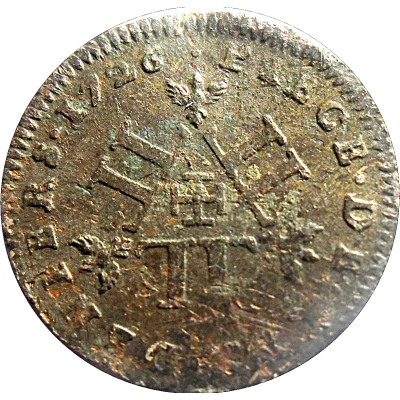

© nonosse
30 Deniers - Leopold I
| Billon | 2.88 g | 23 mm |
| Issuer | Duchy of Lorraine (French States) |
|---|---|
| Duke | Leopold (1697-1729) |
| Type | Standard circulation coin |
| Years | 1726-1727 |
| Value | 30 Deniers (⅛) |
| Currency | Pound of Lorraine (1700-1737) |
| Composition | Billon |
| Weight | 2.88 g |
| Diameter | 23 mm |
| Shape | Round (irregular) |
| Orientation | Coin alignment ↑↓ |
| Demonetized | Yes |
| Updated | 2024-10-04 |
| Numista | N#59747 |
|---|---|
| Rarity index | 87% |
Reverse
Three groups of two joint L (one inversed L and one regular L) joint each other to form a triangle which have an alerion on each angle and surrounding a Cross of Jerusalem.
Script: Latin
Lettering: .PIECE.DE.XXX.DENIERS.1726.
Translation: Coin of 30 Deniers.
Edge
Plain
Comment
Leopold I is the son of Charles V (1642-1690), a lackland duke. Unlike his father, he managed taking back his Duchy after the Ryswick treatees signed on October 30th, 1697. The following year he spoused Charlotte of Orleans, niece of Louis XIV of France, making Leopold I torn in two, between his 2 families: in one side, the French reigning family of his wife, and in the other side, his own family, whose uncle and cousins ruled over the Archiduchy of Austria and as Holy Roman Emperors.This coin denomination is written in French, proof of the growing influence of the Kingdom of France over Lorraine.
Even Lorraine was simply a Duchy, the Duke Leopold Ier wore the title of King on his coins, claiming himself heir of Godefroy de Bouillon, former King of Jerusalem. This also explains the use of a Cross of Jerusalem on the reverse inside the L triangle.
Interesting fact
The 30 Deniers coin from the Duchy of Lorraine, featuring Leopold I, was minted during a time of significant economic and political change in Europe. The coin was issued during the reign of King Louis XV of France, who was also the Duke of Lorraine. At that time, the Duchy of Lorraine was part of the Holy Roman Empire, and the coinage was influenced by the imperial currency system. The 30 Deniers coin was equivalent to one-third of a French livre, and it was widely used in trade and commerce throughout the region. It's worth noting that the coin is made of Billon, which is an alloy of silver and copper. The use of Billon in coinage was common during this period, as it was a more affordable alternative to pure silver. The weight of the coin, 2.88 grams, is also notable, as it was a standard weight for coins of this denomination during that time. Overall, the 30 Deniers coin from the Duchy of Lorraine is an interesting piece of numismatic history, reflecting the economic and political currents of the time.
